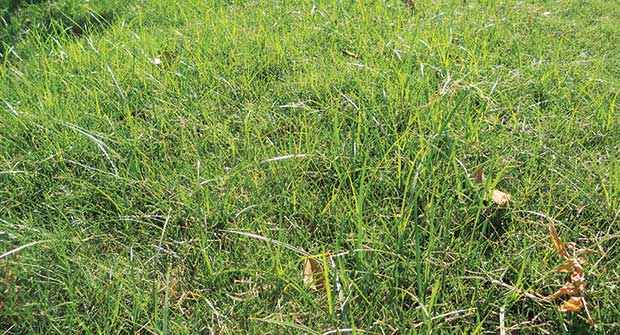
Yellow nutsedge can be found in regions throughout the U.S., especially in temperate climates, says Aaron Hathaway, technical services manager at Nufarm.
Hathaway, Mike Sisti, golf and lawn care market manager at FMC Professional Solutions, and Eric Reasor, Ph.D., southeast research scientist at PBI-Gordon Corp., explain the best ways to identify and control yellow nutsedge.
Identification
A perennial grassy weed, yellow nutsedge can be identified by its light green color, thin blades and a triangular stem.
Hathaway says that yellow nutsedge’s leaves taper to a point and are usually found in sets of three. Yellow nutsedge may form a “V” shape as it grows above the surface of the soil, and it’s typically taller than the rest of a lawn, Sisti adds. In warm climates, the weed emerges in early spring, but it shows up in later spring in cooler climates. In Florida, it can be a yearlong problem, Reasor says.
Control
Yellow nutsedge thrives in areas with saturated soil, so proper irrigation practices and increased drainage can help prevent it. Sisti cautions that the tubers below the surface are the reproductive factor of the sedge, so he doesn’t recommend pulling out the nutsedge.
Products containing the active ingredients sulfentrazone or imazosulfuron can knock down sedges in warm- and cool-season turf, and products with trifloxysulfuron-sodium or sulfosulfuron are recommended for warm-season turf.
“What’s more important is the timing of the application, so waiting until midsummer, like July or August, makes it really hard to control,” Reasor says.


